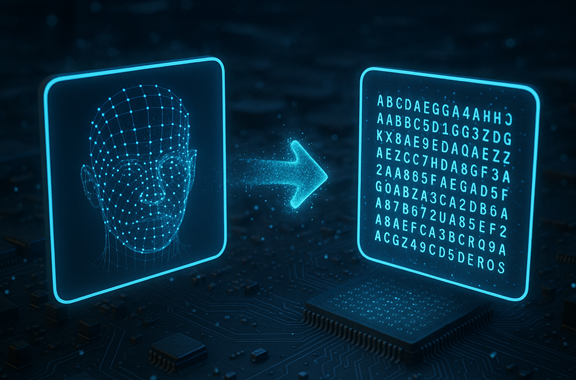BYOK Explained: A Comprehensive Guide to Bring Your Own Key
Bring Your Own Key (BYOK) is emerging as a powerful solution that returns control of encryption keys back to organizations. By allowing businesses to generate, manage, and store their own encryption keys, BYOK builds on conventional encryption methods, delivering greater security, flexibility, and compliance. This approach not only enhances data protection but also adjusts the balance of control, reducing reliance on cloud providers and empowering organizations to dictate their own security policies.
How BYOK Empowers Organizations with True Data Ownership
Historically, encryption served as a fundamental safeguard for data at rest and in transit. Over time, security strategies evolved from basic encryption techniques to more sophisticated ownership models. As cloud computing became the norm, it raised new challenges—organizations often relinquished direct control of their encryption keys to cloud service providers (CSPs). Traditional cloud security models leave businesses reliant on CSPs for encryption key management, creating risks related to data sovereignty and unauthorized access.
In response to increasing concerns over data breaches, regulatory requirements, and corporate espionage, organizations now seek greater autonomy over their security infrastructure. BYOK represents a pivotal step in this evolution, allowing businesses to maintain full ownership of their encryption keys, strengthen data protection, and comply with stringent regulations such as GDPR, HIPAA, and FedRAMP.
As cloud security continues to evolve, organizations that rely on outdated models will face mounting challenges in protecting sensitive information. By adopting BYOK, businesses can regain control over their most valuable digital asset—data—while mitigating risks associated with third-party key management.
Traditional Cloud Security and Its Limitations
In traditional cloud security models, CSPs manage encryption keys on behalf of their customers. While this approach simplifies key management, it introduces several challenges:
- Vendor Lock-In: Organizations relying on CSP-managed keys may find it difficult to switch providers without risking data security.
- Limited Visibility and Control: CSPs maintain access to encryption keys, creating potential vulnerabilities.
- Compliance Risks: Data sovereignty laws require organizations to keep sensitive information within specific geographic boundaries. CSP-controlled encryption keys may not align with these regulations.
By placing key management back in the hands of businesses, BYOK reduces the reliance on third-party providers, offering a path toward greater control and a more tailored approach to security.
Key Advantages of Bring Your Own Key
BYOK offers a transformative approach to cloud security, allowing organizations to take full control of their encryption keys rather than relying on cloud service providers. By embracing this model, organizations gain several primary benefits that surpass the limitations of traditional cloud security models:
Strengthened Security and Risk Mitigation
One of the most compelling benefits of Bring Your Own Key is the robust security posture it provides. When CSPs administer encryption keys, organizations must trust that the provider will adequately safeguard them. However, CSPs are frequent targets of cyberattacks, and in some cases, their security measures may not align with an organization’s specific risk tolerance.
With BYOK, organizations:
- Retain exclusive control over their encryption keys, reducing the risk of unauthorized access from external threats or even internal CSP personnel.
- Minimize the attack surface by eliminating third-party access to sensitive encryption keys.
- Implement their own custom security policies to align with internal compliance standards.
This level of control is particularly important for industries handling highly sensitive data, such as financial services, healthcare, and government agencies.
Improved Compliance with Data Regulations
As global data privacy regulations tighten, businesses must comply with legal and regulatory requirements related to encryption and data sovereignty. BYOK enables organizations to maintain control over encryption keys, ensuring they can:
- Meet strict regulatory mandates such as GDPR, HIPAA, and FedRAMP, which require organizations to demonstrate control over data security.
- Address data sovereignty concerns by holding encryption keys in specified geographic locations, rather than being stored by a CSP that operates across multiple jurisdictions.
- Facilitate audits and reporting with greater transparency and accountability over encryption key management.
Without BYOK, businesses risk non-compliance, which can result in legal penalties, reputational damage, and financial losses.
Protection Against Insider Threats and Unauthorized Access
When encryption keys are stored with a CSP, businesses must trust that the provider’s internal security controls will prevent unauthorized access by employees, contractors, or third parties. However, insider threats remain one of the leading causes of data breaches.
By maintaining their own encryption keys, organizations eliminate this potential vulnerability. Even if an organization utilizing BYOK experiences a security breach, attackers would be unable to access encrypted data without the independently managed keys. This extra layer of security is crucial for businesses that prioritize zero-trust security models and least-privilege access principles.
Greater Flexibility and Vendor Independence
Vendor lock-in is a major concern for organizations that rely on CSP-managed encryption keys. When businesses store encryption keys with a specific provider, migrating workloads to another cloud platform becomes complex and risky.
BYOK eliminates this dependency by allowing organizations to:
- Use the same encryption keys across multiple cloud providers, enabling seamless multi-cloud and hybrid-cloud strategies.
- Switch CSPs without the risk of data loss or exposure.
- Maintain an adaptable security strategy, where encryption keys remain under company control, regardless of infrastructure changes.
This flexibility is particularly beneficial for enterprises with multi-cloud architectures or those looking to negotiate better service terms with CSPs.
Enhanced Business Continuity and Disaster Recovery
In traditional cloud security models, organizations depend on CSPs to control encryption keys, which can introduce business continuity risks. If a CSP experiences an outage, a key management failure, or a contractual dispute, businesses could lose access to their encrypted data.
With BYOK, businesses:
- Gain continuous access to encryption keys, even if their cloud provider experiences downtime.
- Maintain independent backups of encryption keys for disaster recovery purposes.
- Reduce dependence on CSP-controlled key management solutions that may have single points of failure.
By keeping encryption keys independent from cloud providers, organizations can build a more resilient security architecture that safeguards critical data against both external threats and operational disruptions.
BYOK offers businesses true data ownership, stronger security, and increased regulatory compliance by transferring key management responsibilities from CSPs to organizations. Businesses that continue to rely on traditional cloud security models risk greater exposure to cyber threats, regulatory challenges, and vendor lock-in. In contrast, those that adopt BYOK gain full control over their encryption keys—assuring their most valuable digital assets remain protected under their own security framework.
BYOK Applications and Benefits Across Industries
Financial Services: Reducing Risk While Enhancing Customer Trust
The financial services sector faces some of the strictest security and compliance requirements, given the sensitive nature of financial transactions and customer data. BYOK helps institutions maintain stronger control over encryption, reducing fraud risks and demonstrating compliance with regulations such as PCI DSS.
Last year, JPMorgan Chase implemented a BYOK solution for financial services to protect its cloud-hosted financial data, integrating hardware security modules (HSMs) with its cloud-based encryption strategy. This approach allowed the bank to maintain exclusive control over encryption keys while ensuring seamless compliance with evolving regulations. The solution also improved incident response times by allowing immediate key revocation in case of potential security breaches.
Healthcare: Protecting Sensitive Patient Data
Healthcare organizations manage vast amounts of sensitive patient data, making data security and compliance essential. BYOK for healthcare optimizes protection by strengthening HIPAA compliance, securing electronic health records, and allowing medical IoT devices to transmit encrypted data without relying on cloud providers for key management.
The Mayo Clinic deployed a BYOK strategy to secure its cloud-based patient record system. By keeping encryption keys within their own security infrastructure, the clinic was able to restrict decryption and access to patient data to authorized personnel only. This new approach minimized the risk of data breaches and unauthorized access, particularly as the clinic expanded its telemedicine services.
Government and Public Sector: Enabling Data Protection in High-Stakes Environments
Government agencies handle highly classified and sensitive information, making encryption key ownership crucial for national security. BYOK for the government and public sector guarantees data sovereignty by keeping encryption keys within national borders, aligning with frameworks like NIST 800-53. It also mitigates risks associated with foreign cloud providers by preventing unauthorized third-party access.
The U.S. Department of Defense (DoD) incorporated a Bring Your Own Key solution within its cloud migration strategy under the Joint Enterprise Defense Infrastructure (JEDI) program. By utilizing an independently managed key infrastructure, the DoD safeguarded classified and mission-critical data, keeping it under U.S. government control and reducing exposure to foreign adversaries.
9 Steps for Implementing BYOK for a Secure Future
1. Selecting the Right Encryption Strategy
Before implementing Bring Your Own Key, organizations must conduct a thorough risk assessment to understand their security posture, regulatory landscape, and business objectives. Encryption strategies should align with industry compliance standards to meet legal and operational mandates.
Key factors to consider when selecting an encryption strategy include:
- Key Generation and Storage: Determine whether encryption keys will be generated on-premises, within a dedicated HSM, or through a cloud-native key management service.
- Cloud Provider Compatibility: Verify the chosen encryption method is fully compatible with the organization’s CSPs, whether using AWS KMS, Microsoft Azure Key Vault, or Google Cloud KMS.
- Security and Performance Trade-offs: Evaluate how different encryption methods impact system performance and operational efficiency while maintaining stringent security controls.
- Integration with Identity and Access Management (IAM): Implement policies that define who can access and use encryption keys, reducing the risk of insider threats and unauthorized usage.
2. Performing a Key Management Risk Assessment
When deploying a BYOK framework, organizations should conduct a detailed risk assessment focused on encryption key management. This proactive assessment informs key architecture decisions while supporting policy alignment, system integration, and downstream auditing capabilities.
Key components of a comprehensive risk assessment include:
- Data Flow Mapping: Identify where sensitive data resides and where encryption occurs across databases, cloud storage, and application layers to reveal potential vulnerabilities and inform key placement strategies.
- Key Lifecycle Analysis: Evaluate the complete lifecycle of encryption keys from generation through decommissioning to identify potential failure points and operational dependencies.
- Regulatory Data Prioritization: Focus on high-value datasets governed by strict regulatory controls, such as protected health information (PHI), personally identifiable information (PII), and financial records, ensuring BYOK implementation delivers early value and stronger compliance confidence.
- Breach Impact Assessment: Analyze how compromised keys might affect different data categories and business operations to inform risk tolerance levels and justify investment in enhanced controls.
By carefully selecting an encryption approach that balances security, usability, and compliance, organizations can establish a strong foundation for BYOK implementation.
3. Choosing the Right BYOK Architecture
After identifying sensitive data zones and key usage patterns, selecting the appropriate BYOK architecture becomes critical. Organizations can choose from several key architectural approaches based on their control and compliance requirements:
- On-Premises HSMs: Offer maximum control and regulatory assurance through hardware security modules within an organization’s own infrastructure.
- Cloud-Based HSMs: Customer-managed keys in cloud platforms like AWS KMS, Azure Managed HSM, or Google Cloud External Key Manager offer strong isolation with enhanced scalability.
Whichever model is chosen, it’s essential to verify that the HSMs are FIPS 140-2 or Common Criteria certified to meet sector-specific standards. Daon’s TrustX platform supports flexible integration across centralized, distributed, or hybrid architectures.
4. Integrating BYOK into IAM and DevSecOps Pipelines
Effective Bring Your Own Key system implementation extends beyond encryption to encompass operational security. Integration with existing identity and access management (IAM) and DevSecOps workflows allows seamless, secure operations.
Key BYOK integration components include:
- Role-Based Key Access: Enforce strict role-based access controls (RBAC) and least-privilege principles for key management APIs.
- Pipeline Integration: Integrate key rotation, revocation, and lifecycle events into CI/CD pipelines to reduce human error and minimize downtime.
- Security Monitoring: Deploy SIEM integrations and real-time audit logging for transparency and rapid threat detection.
TrustX enables comprehensive monitoring across identity verification workflows while maintaining operational efficiency.
5. Continuous Monitoring and Key Rotation
Managing encryption keys is an ongoing process that requires continuous monitoring, auditing, and key rotation to maintain security and compliance. Organizations should:
- Implement Automated Key Lifecycle Management: Use tools that automate key rotation, expiration, and revocation to minimize risks associated with compromised or outdated keys.
- Monitor for Anomalous Activities: Deploy security information and event management (SIEM) solutions that track unusual access patterns, unauthorized key usage, and potential breaches.
- Enforce Regular Security Audits: Conduct periodic security reviews to certify encryption policies remain aligned with evolving threats and compliance requirements.
- Establish Incident Response Protocols: Develop a clear incident response plan in case of key compromise, including immediate revocation procedures and key recovery strategies.
By proactively managing encryption keys, businesses can strengthen their security posture while reducing the risk of data breaches.
6. Aligning Data Residency and Compliance Controls
In regulated industries, data sovereignty represents a fundamental compliance requirement rather than an optional consideration. BYOK implementations must maintain encryption keys and protected data within specific geographic boundaries defined by regulatory frameworks.
Essential compliance considerations include:
- Jurisdictional Binding: Customer-managed keys must align with specific geographic requirements under GDPR, HIPAA, and FedRAMP regulations.
- Audit Documentation: Maintain detailed records of key lifecycle events—generation, rotation, backup, and destruction—within governance policies.
- Regulatory Demonstration: Comprehensive traceability reinforces trust and demonstrates compliance to internal stakeholders and external regulators.
7. Planning for Business Continuity and Disaster Recovery
Well-architected BYOK strategies must account for unexpected scenarios including accidental key deletion, infrastructure failures, or malicious compromise. Robust recovery workflows preserve encrypted data access for authorized users during critical events.
Critical recovery components include:
- Backup Strategies: Implement out-of-band key backups through secure, offline HSMs or professional escrow services.
- Incident Response: Regularly simulate key compromise scenarios to validate response playbooks and minimize recovery time.
- Testing Protocols: Continuously test revocation, rotation, and re-encryption processes to avoid service disruption.
8. Integrating BYOK with Existing Security Frameworks
A successful BYOK implementation requires seamless integration with an organization’s existing security infrastructure. This involves:
- Ensuring Compatibility with Cloud and On-Premises Environments: BYOK solutions must work seamlessly across multiple cloud platforms, private data centers, and hybrid environments to maintain a unified security posture.
- Defining Key Storage and Access Controls: Organizations should implement RBAC and least-privilege principles to prevent unauthorized access to encryption keys.
- Centralized Key Management: Businesses operating in multi-cloud environments should consider a centralized key management system to streamline encryption policies across different platforms, ensuring a consistent and auditable security approach.
- Automating Encryption Workflows: Integrating BYOK with DevSecOps pipelines allows for automatic key provisioning, decryption, and destruction, reducing human error and improving security efficiency.
A well-integrated BYOK framework strengthens data protection while preserving operational agility and compliance across cloud ecosystems.
9. Preparing for Future Threats
Evolving cryptographic threats from quantum computing to sophisticated supply chain attacks require adaptable BYOK strategies. Organizations must confirm their key management frameworks can respond to emerging security challenges.
Future-ready strategies address:
- Post-Quantum Readiness: Support integration of post-quantum cryptography (PQC) standards as they mature and become standardized.
- Architecture Flexibility: Enable alignment with Zero Trust and decentralized identity frameworks through modular design approaches.
- Long-Term Resilience: Adopt flexible key management architectures that safeguard sensitive assets against future adversaries.
Daon’s TrustX platform is designed with future readiness in mind, ensuring long-term compliance and resilience as threat landscapes evolve.
The Future of Bring Your Own Key and Data Security
As cybersecurity threats evolve and data sovereignty becomes a top priority, BYOK is set to play a central role in the future of data security. Major BYOK trends that will shape the next phase of adoption include:
- Zero Trust Security Models: BYOK will integrate with Zero Trust architectures, securing encryption keys under an organization’s full control regardless of where data resides.
- Post-Quantum Cryptography: As quantum computing advances, organizations will need to adopt quantum-resistant encryption strategies within BYOK frameworks to safeguard data against future threats.
- Regulatory Expansion: Governments and regulatory bodies will continue to push for stricter data sovereignty requirements, further incentivizing businesses to adopt BYOK to maintain compliance.
- Enhanced AI-Driven Security: AI-powered security analytics will be increasingly used to monitor key usage, detect anomalies, and automate encryption workflows, improving BYOK efficiency and threat detection.
Handing key management responsibilities from cloud providers back to organizations, BYOK grants businesses greater command over their encryption strategies, fortifying data protection, bolstering compliance, and offering the agility needed to navigate an increasingly complex digital landscape.
How Daon Is Leading the Way in BYOK Integration
Daon’s cutting-edge BYOK and identity verification solutions put organizations in command of their data security without compromising user experience. With TrustX, its cloud-native, SaaS-based platform, Daon streamlines BYOK integration, enhances security in real-time, and delivers enterprise-grade protection. Companies adopting Daon’s advanced BYOK capabilities can safeguard sensitive data, meet regulatory demands, and create frictionless digital interactions.
Embracing BYOK marks a pivotal evolution in cybersecurity, giving organizations unprecedented authority over their encryption keys. By collaborating with industry leaders like Daon, businesses can seamlessly embed BYOK into their security strategies, reinforcing data sovereignty in an era of ever-evolving threats.









